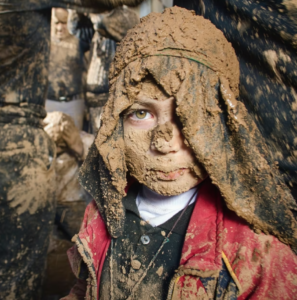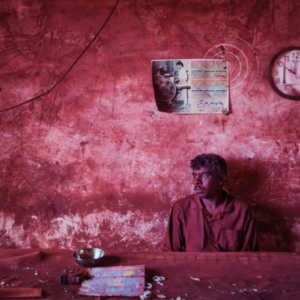To recap where we’ve come from and why this blog series exists - a brief history review and my own thoughts on why NFTs matter:
The Industrial Revolution enabled an increased scale in human organization that facilitated specialization and coordination. Groups of people were brought together in production processes, leading to the rise of commerce and infrastructure types previously hard to imagine. A process ongoing for the last several hundred years, it can be fairly argued that we’re now experiencing a new phase of Industrial Revolution, one that will shape the World in ways we do not yet fully understand.
The first infrastructure developed during the Industrial Revolution was transportation - roads, canals, rail, air - for the movement of people and goods. The second infrastructure developed was energy utilities - oil, pipelines, gas, electricity - for the transmission of power. The third infrastructure has been telecommunications - radio, tv, satellite, Internet - but to what end? Digital Identity. Yielding authority, influence, sovereignty and community, an individual’s digital Identity now has real value, and that digital Identity is best expressed by NFT.
Essential for establishing Identity and authority, NFTs look to be the most likely candidate for spurring increased scale in human organization and bringing together groups of people in the production process. In the space where blockchain meets NFTs we should begin to see new kinds of stores, new habits of time, new work processes, new forms of communication, new kinds of commerce, new ideologies, new forms of play and leisure, new communities. NFTs are the latest versions of the Industrial Revolution’s essentials - technology plus organization.
But what does NFT utility and adoption look like in five years? Ten years? Does NFT utility even matter? Who are the winners in the end? We’ve entered a creativity-based culture, so let’s talk to the creators! With so many unknowns in this new phase of Industrial Revolution, I’ve taken it upon myself to dig into the minds and projects of important NFT creators and crypto artists. My first goal in doing so is to better clarify to new and potential collectors what the NFT market looks like right now in order to set a benchmark for future comparisons. Next, in dedicating each blog post in this series to a single artist, I’m hoping to bring eyeballs and engagement to the artist interviewed. These are the interviews in the series so far:
- Chatting With The RektGuy
- The Brand & Business of Guido Di Salle
- The Brand & Business of TylersJourney
- The Brand & Business of Gabriella Morton
- The Brand & Business of Neil Burnell
- The Brand & Business of Dave Krugman
- The Brand & Business of DarkMarkArt
- A Chat With The Regulars
- The Brand & Business of Patrick Amadon
- A Chat With @spz7dsn_graphic of BrickBeads
- The Brand & Business of Cath Simard
Chatting with @Mehdi_Nazeri88
Today I’m chatting with documentary photographer Mehdi Nazeri, who describes his art as “everyday occurrences that we often see but ignore.” With the goal to share unique cultures and ceremonies through his photography, Mehdi records events in history and stands out for his ability to share the feelings of a moment in time. “Photography is my art, I see things that others do not see and do not have the ability to record,” says Mehdi Nazeri.
Born in Bandar Abbas, one of southern cities of Iran, Mehdi began experimenting with social documentary photography in 2012 and has since won several international prizes and been featured in exhibits around the world. Since entering the NFT space Mehdi has sold over 80 1/1 works - not an easy task for a documentary photographer.
Now let’s get to that Q&A!
How do you define web3?
Web3 means you and me, it means information security and privacy, decentralization, and the freedom to interact with and support the people in your community. It doesn’t matter what your name is or what country you’re from … Web3 is all about communities that support excellent people and what value you can personally bring to the table.
How do you differentiate your brand?
Many people think that photography, especially documentary photography, is a simple matter, but this thinking is very wrong. In documentary photography, we only have the ability to record existing events, that is, we cannot interfere in the image. We capture. Now think about how complicated it is to record the events around us in an artistic way without interference!
Capturing emotions in the frame, most of my work is about people and showing their inner emotions and feelings, photos that you feel aligned with when you look at them. It’s very difficult to be able to convey all the feelings of a subject with a cut of a few thousandths of a second, but that is exactly what I do and this distinguishes my brand. My art is valuable because it makes a person identify with the subject and makes one look inside, into feelings and thinking. The impact is the value of my art.
How much do you typically make per NFT sale and what were some challenges you experienced in getting to where you are now?
The amount I make per sale varies, but on average I earn between 0.4 ETH and 0.5 ETH per photo. Can't give a specific percentage, but currently most of my sales revenue is through NFTs. I've experienced several challenges along the way, such as my weak English and communicating with audiences and collectors from different behavioral cultures. Not only that, but Opensea closed my account because I'm Iranian - definitely choosing the right platform is a key challenge for artists. Another challenge is that my art is photography and this market is newly born. For now my plan is to just survive in this space... in the future I will be entering SuperRare and producing special works for special collectors.
In closing …
I’d like to close with all the important DYOR links I could find on Mehdi as well as some of my favorite pieces from his Foundation.
DYOR Links:
- Twitter - https://twitter.com/Mehdi_Nazeri88
- Foundation - https://foundation.app/@mehdi_nazeri
- Instagram - https://www.instagram.com/Mehdi_Nazeri/
- DecaArt - https://deca.art/Mehdi_Nazeri
- NFTphotographers - https://nftphotographers.xyz/documentary/mehdi-nazeri/


